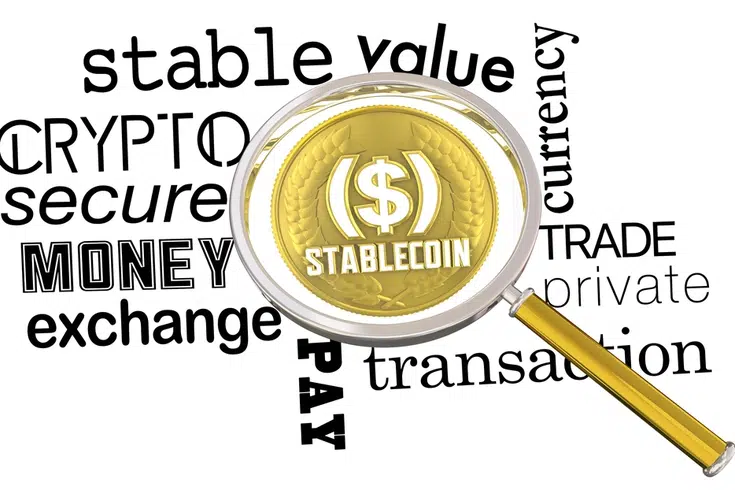Businesses using digital assets for transactions, payroll, or managing treasuries need to keep track of stablecoin compliance 2025 as well as the impact of stablecoin laws 2025 to trade securely and efficiently.
But regulations are not standard. Stablecoins are considered money in some nations, securities in others, and commodities in some. This necessitates understanding the global stablecoin legal landscape 2025 for businesses that want to scale globally.
By integrating with TransFi’s platform, businesses get access to fully compliant stablecoin rails, instant settlements, AI-powered smart routing, and secure cross-border payments. This blog talks about stablecoin regulations 2025, latest stablecoin regulation updates, stablecoin rules for businesses, and much more.
Stablecoin Regulation Guide 2025
The landscape of stablecoin regulations 2025 is more active than ever. Governments and regulators worldwide are moving fast to define rules that protect consumers and businesses without stifling innovation.
Businesses interested in receiving, sending, or settling stablecoins worldwide should take notice of these regulations since avoidance of stablecoin compliance 2025 can lead to frozen transactions, penalties, or being put under the regulatory microscope. Businesses require automated systems to comply with jurisdiction-specific regulation for AML, KYC, and reporting, particularly while going international. That's where TransFi offers a significant benefit. Its system is completely compliant with international regulatory requirements, taking care of compliance in multiple regions automatically, eliminating the necessity for merchants to set up local operations.
What this actually implies is that companies can implement stablecoins for remittances, payments, and treasury management without fear of regulatory non-compliance.
TransFi not only maintains compliance with the stablecoin legal framework 2025, but also offers convenient on-ramps to fiat and digital assets, real-time settlements, and AI-driven smart routing for the cheapest and quickest rails. By using a compliant platform such as TransFi, companies can concentrate on growth, customer satisfaction, and expansion globally without worrying about navigating the changing landscape of stablecoin regulation updates.
Stablecoin Regulations 2025 by Region
LATAM (Latin America)
In LATAM, countries like Brazil, Mexico, and Argentina are moving cautiously with stablecoins. Regulators are primarily focused on AML/KYC, consumer protection, and ensuring that stablecoins are fully backed. Some countries are experimenting with regulatory sandboxes to test digital currencies. Tracking evolving rules around reporting, licensing, and cross-border payments is very important for businesses operating in the LATAM region.
TransFi lets you expand in the LATAM region without compliance friction by automatically complying with regional standards, allowing companies to accept, settle, and convert stablecoins across borders without establishing local entities.
APAC (Asia-Pacific)
APAC has a mixed approach. Singapore and Japan both have well-defined frameworks for digital assets, such as licensing for payment processors and exchanges. China banned trading in crypto but is developing its central bank digital currency, the Digital Yuan. Southeast Asia nations such as Thailand, Vietnam, and the Philippines are developing sandbox regulations for stablecoins and digital payments.
TransFi takes care of varying compliance demands in APAC for you, guaranteeing your transactions in the region comply with AML, KYC, and cross-border reporting requirements, leaving your company having nothing to worry about while accessing multiple markets.
MENA (Middle East & North Africa)
MENA nations are slowly embracing stablecoin structures. The UAE and Bahrain are leading the pack, with regulation and licensing of crypto and digital assets, including stablecoins, centered on investor protection and anti-money laundering. Other regional nations are keeping an eye on progress before developing their own laws.
With TransFi, companies can receive stablecoins in MENA without establishing local entities. The platform's regulatory-oriented architecture guarantees transactions are compliant with regional requirements, allowing firms to venture into emerging markets safely.
EMEA (Europe, Middle East & Africa)
Europe is instituting regulation under MiCA (Markets in Crypto Assets), imposing tight reserve backing, transparency, and licensing requirements on stablecoin issuers and platforms. African nations are a patchwork: Nigeria's eNaira has a government-backed stablecoin, while South Africa and Kenya are establishing digital asset and cross-border compliance frameworks.
Here's the deal: working in EMEA needs a platform that will automatically deal with varied rules across dozens of nations. TransFi provides worldwide compliance for each transaction, allowing businesses to expand across Europe and Africa without headache from compliance.
North America
The US is prioritizing strict AML/KYC, reserves, and possible federal regulation of stablecoin issuers. Canada has been a bit more liberal but prioritizes reporting and protection for consumers. Businesses that operate here must pay close attention to cross-border transactions and ensure their stablecoin counterparts are completely compliant.
With TransFi, companies are able to reach US and Canadian markets securely. All payments are settled on a compliance-first platform that complies with regulatory requirements, provides immediate settlement, and eliminates the hassle of handling multi-jurisdictional rules manually.
Global Takeaway
Stablecoin compliance 2025 is highly variable by region, and companies need to remain up to date in order to operate safely. TransFi addresses this by offering one platform that will automatically handle regional compliance, support for fiat and stablecoins, instant settlements, and full regulatory compliance in LATAM, APAC, MENA, EMEA, and North America.
This enables companies to concentrate on growth, global expansion, and customer experience without having to worry about cumbersome multi-region compliance obligations.
Stablecoin Compliance 2025
Understanding stablecoin compliance 2025 is important for companies that want to utilize digital assets without breaking the law. Compliance is not merely a matter of complying with laws—it's a matter of risk management, reputation, and operational effectiveness. Regulators today expect companies to have good AML (anti-money laundering) controls, perform rigorous KYC (know your customer) verification, and make sure all stablecoin transactions are traceable and auditable. Failure to comply with these requirements can lead to hefty fines, frozen assets, or even prosecution.
The thing is: manually processing compliance across several regions is extremely convoluted, particularly for globally operating businesses. That's where TransFi comes in. Its technology is designed with stablecoin business compliance as its foundation, providing enterprise-level systems that automatically comply with local and global regulatory requirements. Merchants are able to accept, send and settle stablecoins without having to establish multiple legal entities or deal with complex compliance processes. Sophisticated AML systems track all transactions, minimizing the risk of financial crime and ensuring that all payments are at the highest global standards.
What this actually means is that businesses can adopt stablecoin rails for payments and settlements with confidence. TransFi not only streamlines compliance but also enables real-time settlement, smart routing backed by AI, and access to more than 40 currencies and 80 digital assets. Businesses are able to concentrate on growth and revenue instead of regulatory challenges, all while enjoying the highest levels of stablecoin compliance 2025. With TransFi, compliance and efficiency are complemented, and businesses are able to scale globally and safely.
Also read about: How Fintech Startups Can Build on Stablecoin Infrastructure
Stablecoin Rules for Businesses
In the near future, the stablecoin regulatory outlook for businesses is set to become very clear, but caution is essential. Regulators across the globe are increasingly focused on ensuring that stablecoins are fully backed, transparent, and compliant with AML and KYC rules. Countries such as the US and UK are developing tighter reserve and reporting requirements, while Asian and EU regions are establishing formal regulations on cross-border stablecoin usage.
Essentially, what this actually signifies is that companies cannot view stablecoins as yet another means of payment—companies need to actively adapt with changing laws so as not to cause disruptions.
Here's the catch: it's tough to keep pace with these updates manually, particularly for businesses that operate globally. That is where TransFi delivers a significant edge. With embedded global compliance, transaction monitoring via AI, and automated compliance with regulatory frameworks across several jurisdictions, TransFi takes away the headache of monitoring stablecoin regulation updates.
With TransFi, businesses can accept, send, and settle stablecoins and fiat currencies anywhere in the world without fear of compliance loopholes or legal risk. Additionally, businesses also enjoy real-time settlements, cost-effective smart routing powered by AI, and access to 250+ local payment methods.
Conclusion
The era of stablecoins has arrived, but with it comes the responsibility of navigating crypto regulations 2025 and stablecoin laws 2025. Businesses that embrace these digital assets without understanding the rules risk operational interruptions, fines, or reputational harm. Yet at the same time, stablecoins create unparalleled opportunities for cross-border settlements, real-time settlements, and international growth.
With a compliant platform such as TransFi, businesses have instant access to stablecoins, fiat, and more than 80 digital assets, all with low and predictable settlements. The future for stablecoin regulation is uncertain for businesses, but those embracing the proper tools can move forward with confidence, opening up global opportunities without headaches for operation or compliance. If you are someone struggling with compliance issues, talk to an expert at TransFi and expand globally in a hassle free manner while staying compliant with stablecoin regulations 2025.
FAQs
- How do stablecoin laws impact businesses 2025?
Stablecoin laws in 2025 have an influence on everything from transaction compliance to reporting requirements. Businesses that utilize stablecoins for payments, remittances, or treasury management are required to satisfy AML, KYC, and reporting requirements, or face fines and frozen assets. With TransFi, businesses can receive and settle stablecoins worldwide while being compliant with all crypto regulations in 2025, minimizing operational risk and ensuring that transactions are safe and transparent. - What businesses must know about stablecoin regulations 2025?
Businesses should have insight into the intricacies of stablecoin regulation updates, such as reserve requirements, rules specific to jurisdictions, and cross-border regulations. TransFi makes this easier by enforcing compliance protocols automatically in 100+ countries, giving a fully compliant environment for sending, receiving, and settling payments without requiring multiple legal entities. - What is the stablecoin regulatory outlook for businesses currently?
The stablecoin regulatory outlook for businesses currently is more regulatory clarity worldwide, with tight regulations on backing, reporting, and disclosure. Companies like TransFi guarantee compliance with the current global standards along with instant settlement, AI-driven smart routing, and support for multiple currencies, enabling companies to comfortably function in the changing regulatory environment. - What are stablecoin compliance requirements for companies?
Companies have to institute strong AML/KYC measures, monitor transactions for suspicious behavior, and adhere to report submission obligations under the laws in their regions. With TransFi, all these needs are integrated into the platform. Firms receive automatic compliance with international regulations, fiat and stablecoin rails access, and protection from financial crime, as well as easier cross-border payments and less complexity in operations.
5.What is the global stablecoin legal landscape 2025?
The global stablecoin legal landscape 2025 is becoming more harmonized, with regulations developing in the US, EU, Asia, and Africa. There are differences, nonetheless, between jurisdictions. By partnering with TransFi, businesses can navigate this landscape safely, using a single platform that ensures compliance, supports 80+ digital assets, and provides predictable settlements, allowing companies to scale internationally without regulatory interruptions.
Table of Contents
Suggested Article
Explore our products

Make global payments at the speed of a click

Accept payments, remove borders.

Unlock Seamless Digital Currency Transactions Anywhere








.png)














